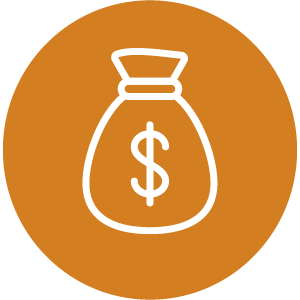Survey of economic and social developments in the Arab region 2022-2023
Chapter 1
The global context and its implications for the Arab region
Chapter 2
Regional socioeconomic trends
Chapter 3
Social developments and gender dynamics
Chapter 4
Assessing inflation policies in Arab countries
Preface, Acknowledgements, Executive summary, References, Endnotes
download
Full Report

Preface
The Survey of Economic and Social Developments in the Arab Region is an annual flagship publication of the Economic and Social Commission for Western Asia (ESCWA). The publication is mandated by paragraph 173 of General Assembly resolution 35/56; paragraphs 2 to 4 of ESCWA resolution 270 (XXIV); and paragraphs 1 and 2 of ESCWA resolution 303 (XXVII). It seeks to contribute to efforts by member States to reform economic institutions and develop and implement policies based on principles of good governance in order to enable economic planning and policymaking in support of inclusive and sustainable development. The present 2022-2023 edition focuses on analysing the most recent socioeconomic developments from January 2022 to June 2023. The publication has two key objectives: to analyse routinely monitored economic and social variables in the Arab region in a global context (chapters 1 to 3), and to focus on inflation and exchange rate regimes in the Arab region (chapter 4).
Acknowledgements
The present publication was prepared under the supervision and guidance of Moctar Mohamed El Hacene, who leads the Shared Economic Prosperity Cluster at ESCWA. Ahmed Moummi, coordinator of the report, led a core team comprising Souraya Zein, Jan Gaska, Nathalie Khaled, Khalid Abu-Ismail, Vladimir Hlasny and Jimmy Hajj. Chapter 4 was prepared by Hatem Salah, ESCWA consultant, under the supervision of the coordinator of the report. Research assistance and administrative support were provided by Maroun Laoun, Bilal Farhat, Mohamad El Mousawi and Arpy Atamian. The team is grateful for data support from the ESCWA Statistics, Information Society and Technology Team.
Policymakers and other stakeholders were consulted throughout the report’s preparation. An external expert group meeting reviewed and validated the draft report on 26 September 2023. Participating experts comprised Ali Awdeh, Hatem Salah, Aljaz Kuncic, Raidan Al Saqqaf, Claudia Assmann and Samia Hamouda.
The Survey of Economic and Social Developments in the Arab Region is an annual flagship publication of the Economic and Social Commission for Western Asia (ESCWA). The publication has two key objectives: to analyse routinely monitored economic and social variables in the Arab region in a global context (chapters 1 to 3), and to focus on inflation and exchange rate regimes in the Arab region (chapter 4).
1. The global context and its implications for the Arab region
Key messages

After the tumultuous 2020–2022 period caused by the COVID-19 pandemic, the war in Ukraine and the great comeback of high inflation to the developed economies, 2023 brought a moderately optimistic outlook with slowly moderating inflation, decreases in commodity prices and the successful avoidance of crisis in European industries.

This has had, however, significant costs for middleincome economies and least developed countries. Interest rate hikes increased the cost of capital and triggered outflows to high-income economies. A deep reform of the international financial architecture is needed to distribute costs and benefits more evenly.

A food crisis was averted with the Black Sea Grain Export Initiative and higher-than-usual yields around the world. The El Niño-Southern Oscillation cycle, however, could bring unprecedented natural disasters and the return of high global food prices.

The resilience of advanced economies to a sudden halt in the flow of hydrocarbon exports from the Russian Federation, achieved through firm policy actions, behavioural changes and energy conservation measures, shows that the world is becoming increasingly independent from oil and gas. Prices are expected to decrease in the medium to long run, which calls for action by Arab oil exporters to accelerate the development of new growth models.
The global economic outlook for 2024 is moderately optimistic given the recovery of high-income and developed countries from the COVID-19 shock and the repercussions of the conflict between the Russian Federation and Ukraine. Growth in global output is projected to remain subdued in 2023 and 2024 at 2.3 and 2.5 per cent, respectively, significantly below the midterm average of 3.1 per cent.
Commodity price inflation seems to be contained in developed countries while developing economies, are struggling with high interest rates, capital flight to developed countries and high borrowing costs. Globally, the consumer price index (CPI) is expected to reach 7.7 per cent in 2023 and 4.9 per cent in 2024, well above the medium-term average of 3.1 per cent.
Table 1.1 Output growth and inflation in the main economies worldwide, 2021-2024 (Percentage)
The surge in interest rates in the developed economies will attract investment, leading to the strengthening of the dollar, euro and yen. The first half of 2023 saw continued hikes in interest rates by the Federal Reserve in the United States, before it was officially “paused” in June 2023. In Europe, the European Central Bank hiked interest rates by 25 basis points in June, but it is expected to end its rate hikes as inflation slows.
Figure 1.1.a Interest rates in dollars (percentage per year)
Figure 1.1.b . Interest rates in euros (percentage per year)
Following a tumultuous 2022, 2023 brought a stabilization in oil prices on the international market, and a slow but steady decline from about $80 per barrel in January to $75 in June. The price has since increased to around $90 per barrel in September owing mostly to production cuts in Saudi Arabia. The price is expected to stay at this level in 2024 and 2025 against global monetary tightening that curbs demand, the slower-than-expected recovery of China, an uncertain geopolitical situation and the development of climate policy.
Figure 1.2 Oil price projection
Note: The oil price forecast is based on a vector error-correction (VEC) model, including OPEC production, other suppliers’ production, total oil consumption, the world’s industrial production index, oil prices, and CPI inflation and interest rates in the United States.
After the fall in consumption in 2022, induced by unprecedented consumption cuts in Europe, Eurasia and the Pacific, the demand for gas is expected to remain flat in 2023. On the supply side, global gas production fell by 0.3 per cent in 2022 and is expected to further decrease by 1 per cent in 2023, with additional production in North America and the Middle East not able to fully counteract the fall in the supply from the Russian Federation.
Figure 1.3 Changes in global gas production by region, 2022-2025 (billions of cubic metres)
Note: C&S America is Central and South America.
2. Regional socioeconomic trends
Key messages

The war on Gaza is expected to weigh on Arab economies. The three-month war scenario expects that these economies will grow at a slower pace compared with the pre-war scenario from 2023 to 2025, at an annual average of 3.6 per cent compared with 3.8 per cent, respectively.

While the cut in oil production and decreased demand are expected to slow economies in GCC countries, expansion in non-hydrocarbon sectors, particularly tourism, services and infrastructure projects, will accelerate GDP growth, which is expected to reach 4.1 per cent on average from 2023 to 2025.

Increased phosphate and gas production in Arab middleincome countries is expected to drive economic growth. However, GDP growth will be affected by the war on Gaza and the spillover effects on neighbouring countries. The three-month war scenario expects that GDP will grow by 3.3 per cent on average from 2023 to 2025 compared with 3.8 per cent in the pre-war scenario.

The situation in conflict-affected countries remains uncertain and is overshadowed by the war on Gaza, political divides and security concerns. The three-month war scenario expects that GDP will increase by 4.2 per cent on average from 2023 to 2025 compared with 4.6 per cent in the pre-war scenario.

The emerging conflict in the Sudan negatively affects the outlook for the Arab least developed countries. GDP for these countries is expected to contract by 4 per cent on average from 2023 to 2025.
The gross domestic product (GDP) of the Arab region was expected to grow at a moderate pace of around 3.6 per cent in 2024, and at a faster pace of around 4.2 per cent in 2025 before the start of the war on Gaza, driven by a rebound in tourism and the financial sector as well as expansionary infrastructure projects. However, the war on Gaza which started in October 2023 is expected to slow down economic growth in the region in 2024. The three-months war scenario predicts that in 2024, GDP will grow by 3.3 per cent.
Table 2.1 GDP and inflation by subregion, 2023-2025
* ESCWA projections based on the World Economic Forecasting Model for 2023 and based on the ESCWA-UNDP Expected Socio-Economic Impacts of the Gaza Crisis on Neighboring Countries in the Arab States Region (forthcoming)
While a cut in oil production and a decrease in demand are expected to slow economic growth in Gulf Cooperation Council (GCC) countries, the expansion of non-hydrocarbon sectors, particularly the entertainment business, as well as the recovery of the tourism sector, a burgeoning services sector and numerous infrastructure projects will accelerate an upward climb in GDP. Growth is expected to reach 4.1 per cent on average during the 2023-2025 period.
Table 2.2 GDP and inflation in GCC countries, 2023-2025
The increase in phosphate and gas production from Arab middle-income countries is expected to drive economic growth, with GDP predicted to rise by 3.7 per cent on average during the 2023-2025 period according to pre-war scenario. The risks, however, are skewed downward amid high inflation and financing costs on one hand and the ongoing war on Gaza and its impact on neighbouring countries. The three-months war scenario expects a slowdown in economic growth to around 3.3 per cent during the 2023-2025 period given the significant impact of the war on the tourism sector and on capital inflow in Egypt, Jordan and Lebanon, in addition to mounting fears of an escalation of the war to become a regional conflict.
Table 2.3 GDP and inflation in middle-income countries, 2023-2025
* ESCWA projections based on the World Economic Forecasting Model for 2023 and based on the ESCWA-UNDP Expected Socio-Economic Impacts of the Gaza Crisis on Neighboring Countries in the Arab States Region (forthcoming)
The situation in Arab conflict-affected countries remains uncertain and is overshadowed by the war on Gaza, political divides and security concerns. GDP was expected to increase by 4.5 per cent on average during the 2023-2025 period during the pre-war scenario. The three-month war scenario predicts that GDP will grow by 4.2 per cent during the same period. The war on Gaza, with the severe level of violence against Palestinian civilians, is pushing the Gaza strip into dire economic and social conditions and has propagated to the whole State of Palestine. GDP in Palestine is expected to decline by 4.4 per cent during the 2023-2025 period while the massive number of casualties and injured in addition to the vast destruction will likely push the State of Palestine 10 to 15 years back.
Table 2.4 GDP and inflation in conflict-affected countries, 2023-2025
* ESCWA projections based on the World Economic Forecasting Model for 2023 and based on the ESCWA-UNDP Expected Socio-Economic Impacts of the Gaza Crisis on Neighboring Countries in the Arab States Region (forthcoming)
The outlook for the Arab least developed countries is highly uncertain and gloomy, and is affected by the escalating conflict in the Sudan. GDP is expected to contract by 3.8 per cent on average during the 2023-2025 period.
Table 2.5 GDP and inflation in least developed countries, 2023-2025
3. Social developments and gender dynamics
Key messages

Unemployment rates are expected to remain elevated in the region at around 11.6 per cent in 2023 and 11.5 per cent in 2024.

According to the 2023 Global Gender Gap Index, the Arab region’s average score remains static. It has the world’s most significant disparities in gender equality.

Poverty is projected to decline sluggishly in the Arab region over the coming years, reaching 32.7 per cent by 2025. In middle-income countries, poverty rates are expected to resume a downward trend, declining from 25.1 per cent in 2022 to an estimated 23.8 per cent by 2025. In the least developed and conflictaffected countries, poverty rates are expected to increase from 48.9 per cent in 2023 to 49 per cent from 2024 to 2025. In the GCC subregion, poverty is projected to decline from 9.6 per cent in 2023 to 9.1 per cent in 2025.

Striking gender disparities persist in labour force participation. While female labour force participation is estimated to be as low as 19.88 per cent, compared to the global average of 47.15 per cent, male labour force participation is around 70.38 per cent, close to the global average of 72.36 per cent.
One third of the region’s population – 33 per cent – falls under the ESCWA poverty threshold, which is comparable to national poverty lines. The share is expected to decline sluggishly to 32.7 per cent by 2025. Arab middle-income countries could see their poverty rates gradually recovering from their height during the pandemic years, while the least developed and conflict-affected countries, could witness an increase in poverty rates.
Table 3.1 Poverty rates in the Arab region
The Arab region continues to have the lowest global gender gap score among all world regions, at 0.62, implying a 0.38-point gap in 2023. This score indicates deep-rooted challenges, including sociocultural norms, policy barriers and labour market issues. The estimated time to bridge the gap is over 150 years.
Figure 3.1 Global Gender Gap Index scores by region, 2023
Note: Regional average scores were weighted by population using population data from the World Bank's World Development Indicators database.
Striking gender disparities persist in labour force participation. While female labour force participation is estimated to be as low as 19.88 per cent, compared to the global average of 47.15 per cent, male labour force participation is around 70.38 per cent, close to the global average of 72.36 per cent.
Figure 3.2 Female and male labour force participation rates, regional averages, 2023
The Arab region is anticipated to continue facing a high unemployment rate, with projections indicating a persistently elevated level. The overall regional rate is expected to be 11.6 per cent in 2023, among the highest rates globally. It is projected to decrease slightly to 11.5 per cent in 2024 (table 3.3). The conflict-affected and least developed countries face significant challenges in generating sufficient employment opportunities, resulting in a high unemployment rate while Middle-income countries demonstrate comparatively better performance on unemployment. The GCC subregion exhibits the lowest unemployment rates in the region.
Table 3.2 ESCWA unemployment rate projections, 2023-2024 (Percentage)
a Figures for the State of Palestine do not account for the October 2023 war in Gaza.
4. Assessing inflation policies in Arab countries
Key messages

Inflation in Arab countries is partly imported due to exogenous factors, and partly endogenous, and has generated currency crises in some cases.

Six Arab countries had high inflation rates in the past few years, namely, Egypt, Lebanon, the Sudan, the Syrian Arab Republic, Tunisia and Yemen.

Strengthening the independence of central banks is essential to enhancing the credibility of monetary policies.

Coordinating different policies, including fiscal and monetary policies, is necessary during disinflation.

Based on variance decomposition, there are three main sources of inflation in the six Arab countries with high inflation rates: government expenditure, the money supply and nominal effective exchange rates (NEER).
Inflation is partly imported and partly endogenous, and has generated severe currency crises in some countries, such as Lebanon and the Syrian Arab Republic. Even though many countries in the Arab region have managed to keep inflation rates at low to moderate levels, six countries have recorded high rates in the past few years, namely, Egypt, Lebanon, the Sudan, the Syrian Arab Republic, Tunisia and Yemen.
Table 4.1 Inflation rates (Percentage)
a indicates forecasts.
For the six Arab countries with high inflation rates, the main sources of inflation are government expenditure, money supply and the nominal effective exchange rate (NEER). Given the persistence of energy subsidies in some countries, the impact of fluctuations in energy prices was limited. Also, a certain inflation inertia is evident, where the current price level depends on the price level of the previous period, indicating a high degree of downward price stickiness.
Table 4.2 Decomposition of inflation variance: a summary of the main results over a 24-month horizon
There is a positive relationship between inflation and poverty levels by country, based on the average values of inflation and the poverty ratio over a recent period, in cross-country data.
Figure 4.1 Inflation and poverty ratio by country
Note: Poverty headcount ratio at $6.85 a day (2017 PPP), percentage of population.
Inflation may affect the size of the informal sector, where prices increase at a moderate pace compared to those in the formal sector. There is a positive correlation between the size of the informal sector and the level of inflation in cross-country data.
Figure 4.2 Inflation and the informal sector
The sacrifice ratio measures the percentage of output (or GDP) lost for each 1 per cent reduction in inflation. A lower sacrifice ratio means that the economy can reduce inflation with less cost in terms of output and employment. Estimates of the sacrifice ratio show that the cost of disinflation policy in the three countries studied ranges from 0.35 to 2.43. Overall, the cost of disinflation is very low in Egypt and Morocco but relatively high in Tunisia.